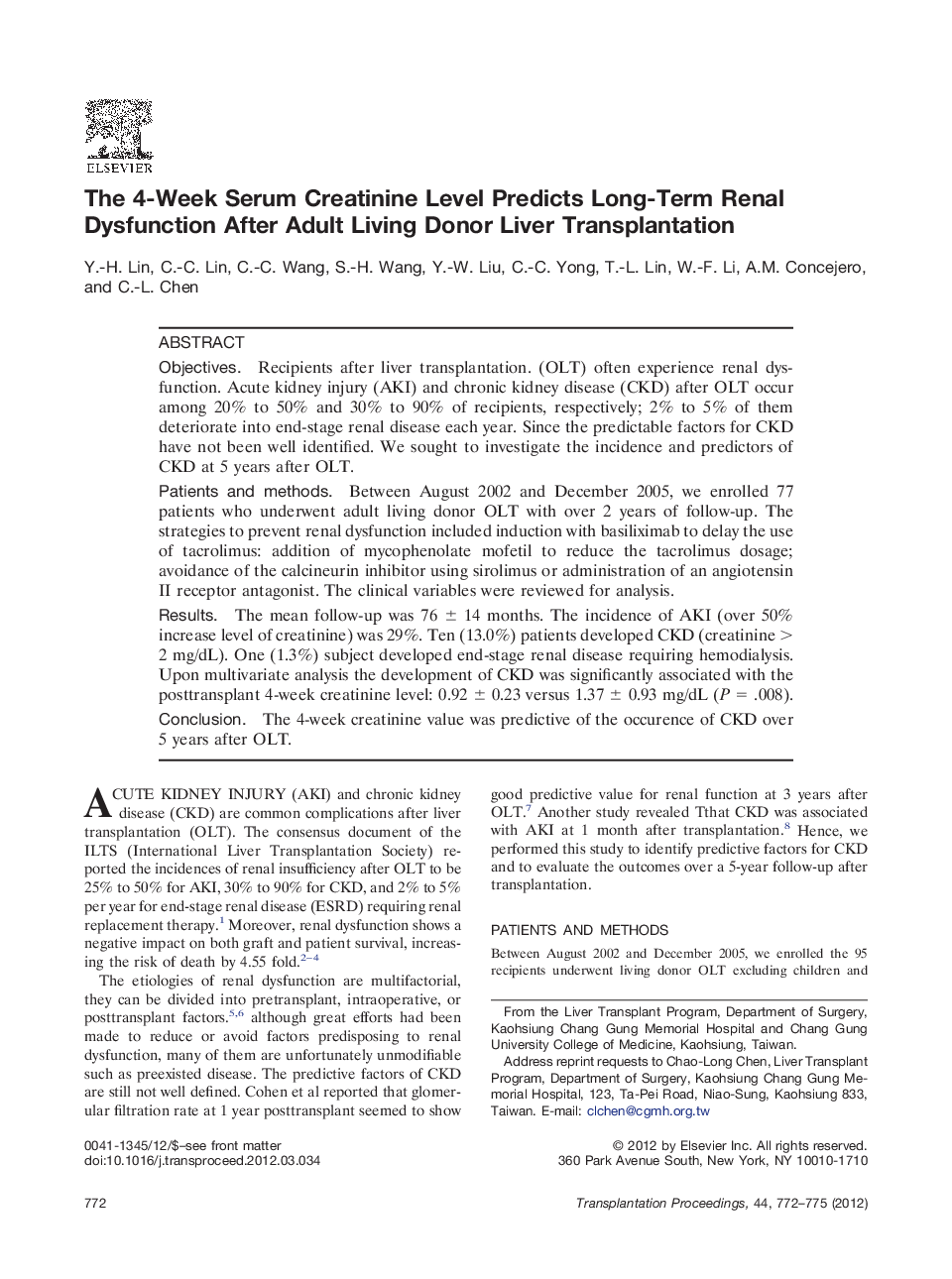| Article ID | Journal | Published Year | Pages | File Type |
|---|---|---|---|---|
| 4257793 | Transplantation Proceedings | 2012 | 4 Pages |
ObjectivesRecipients after liver transplantation. (OLT) often experience renal dysfunction. Acute kidney injury (AKI) and chronic kidney disease (CKD) after OLT occur among 20% to 50% and 30% to 90% of recipients, respectively; 2% to 5% of them deteriorate into end-stage renal disease each year. Since the predictable factors for CKD have not been well identified. We sought to investigate the incidence and predictors of CKD at 5 years after OLT.Patients and methodsBetween August 2002 and December 2005, we enrolled 77 patients who underwent adult living donor OLT with over 2 years of follow-up. The strategies to prevent renal dysfunction included induction with basiliximab to delay the use of tacrolimus: addition of mycophenolate mofetil to reduce the tacrolimus dosage; avoidance of the calcineurin inhibitor using sirolimus or administration of an angiotensin II receptor antagonist. The clinical variables were reviewed for analysis.ResultsThe mean follow-up was 76 ± 14 months. The incidence of AKI (over 50% increase level of creatinine) was 29%. Ten (13.0%) patients developed CKD (creatinine > 2 mg/dL). One (1.3%) subject developed end-stage renal disease requiring hemodialysis. Upon multivariate analysis the development of CKD was significantly associated with the posttransplant 4-week creatinine level: 0.92 ± 0.23 versus 1.37 ± 0.93 mg/dL (P = .008).ConclusionThe 4-week creatinine value was predictive of the occurence of CKD over 5 years after OLT.
